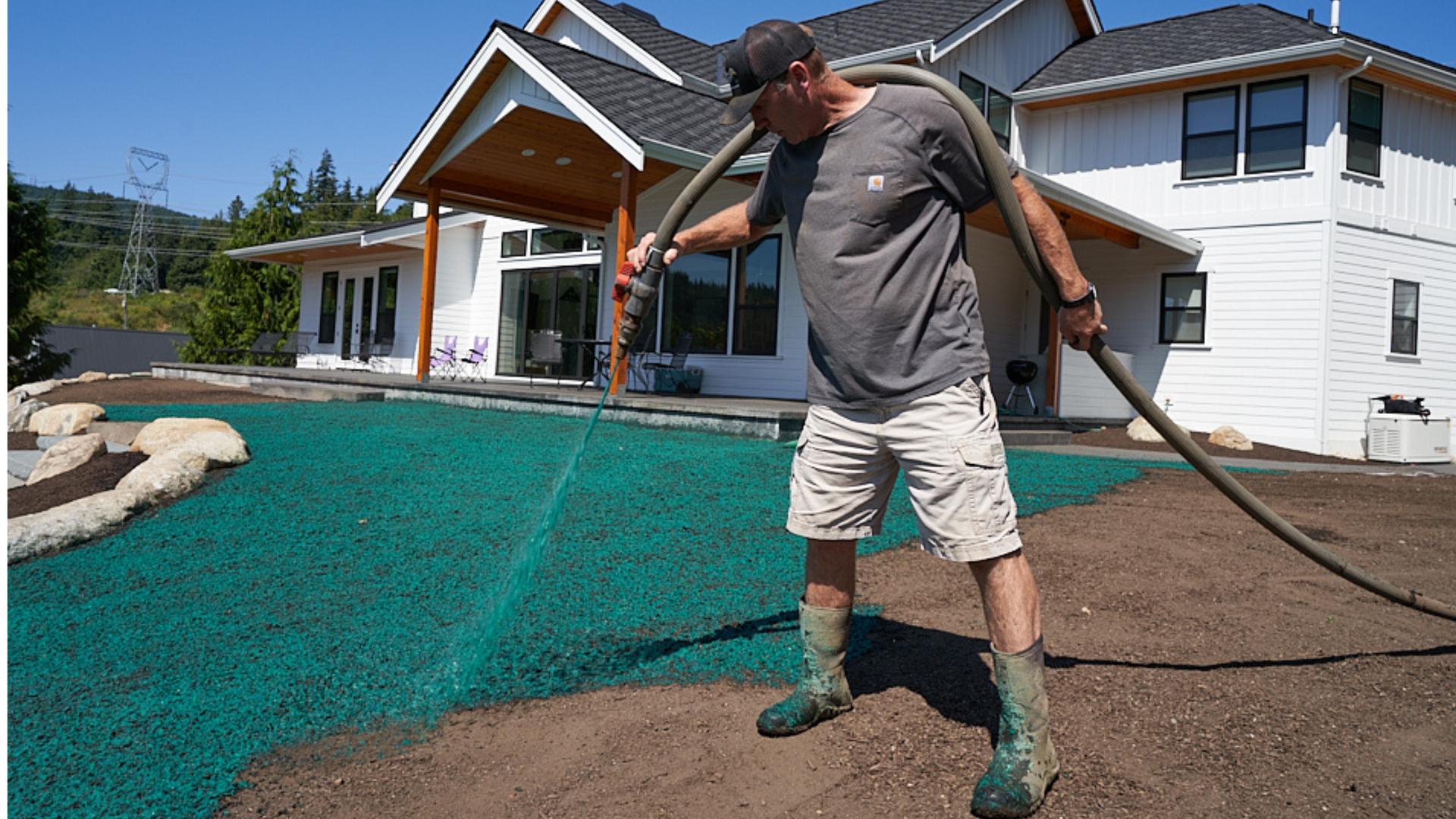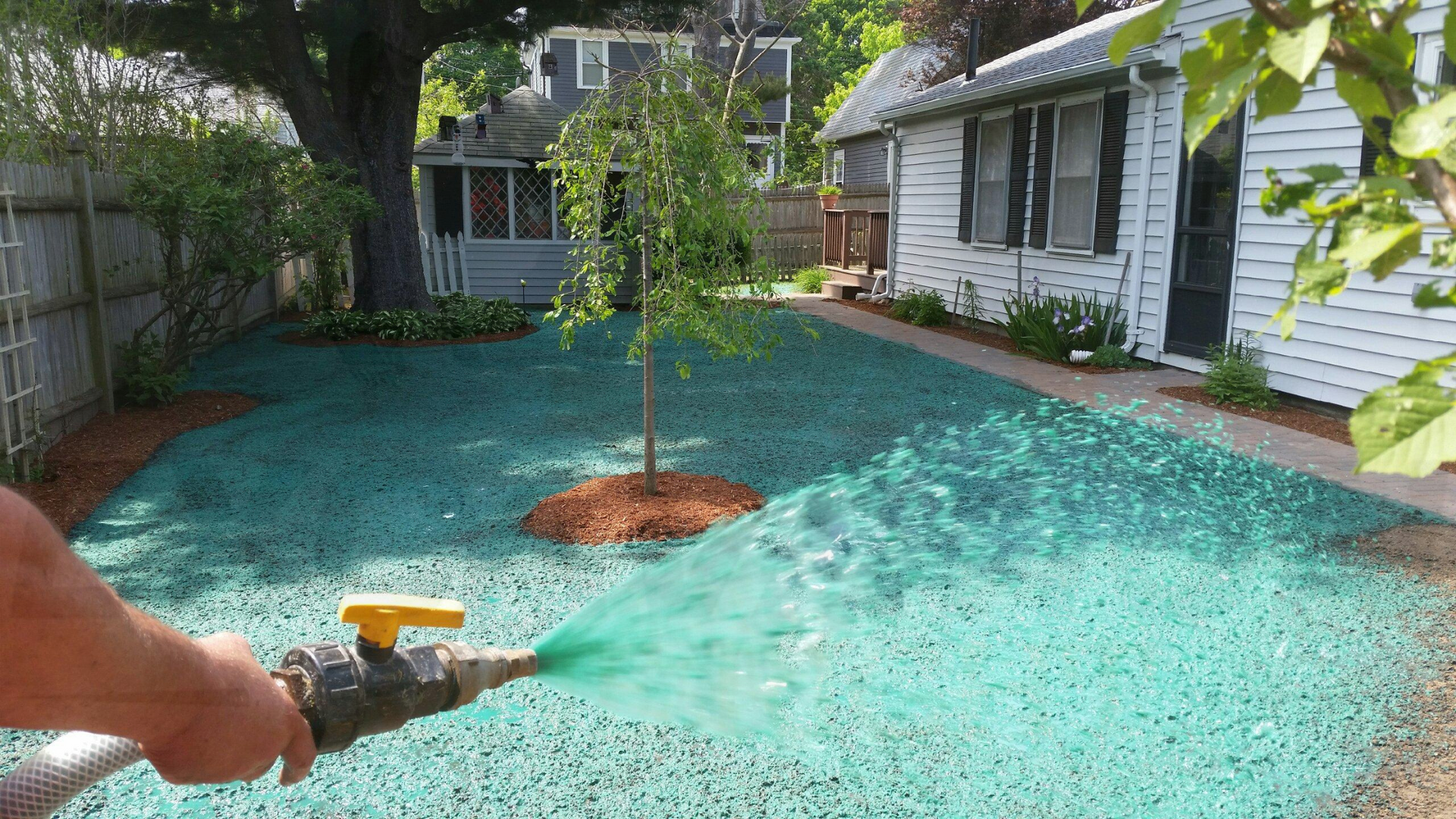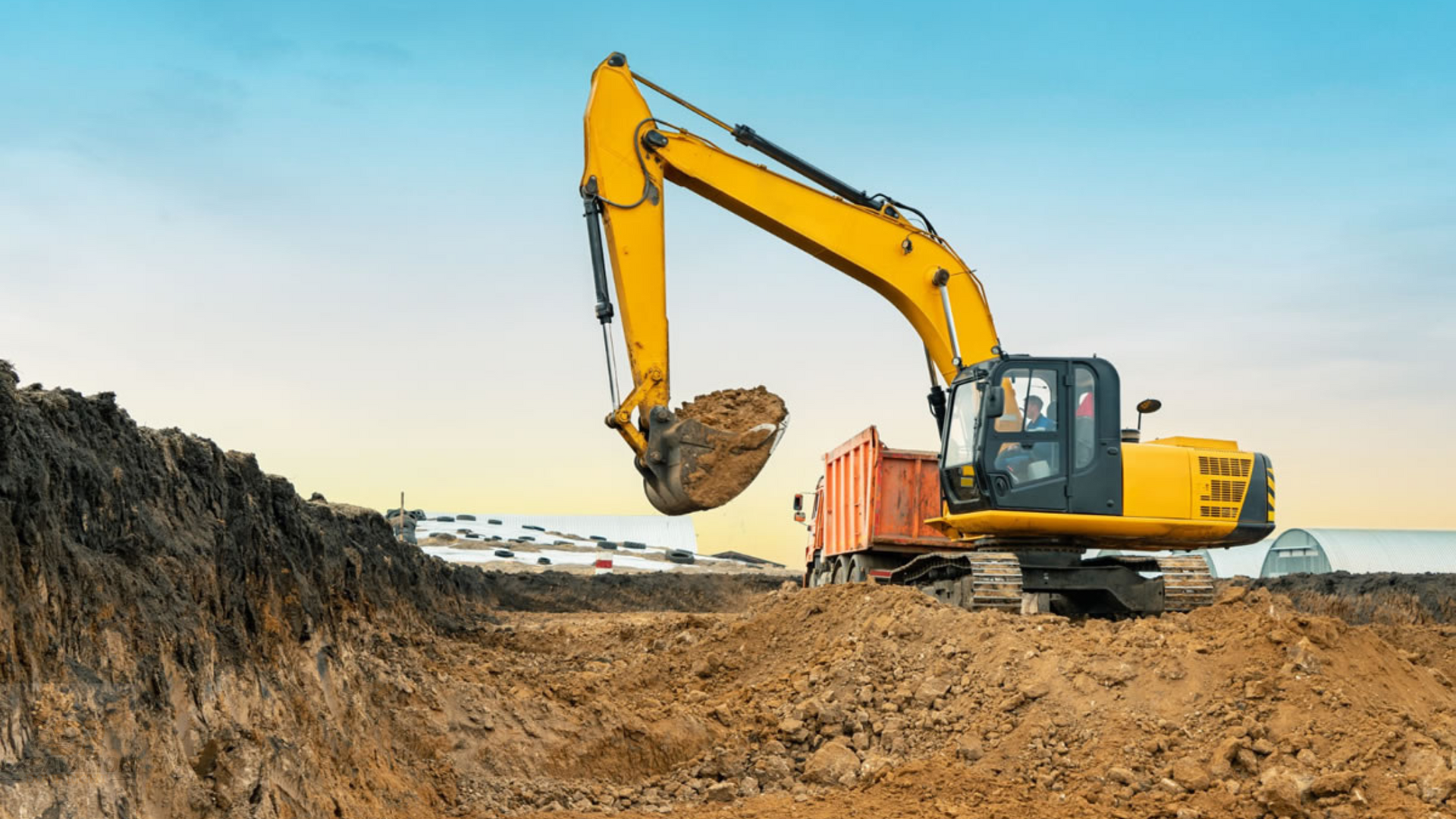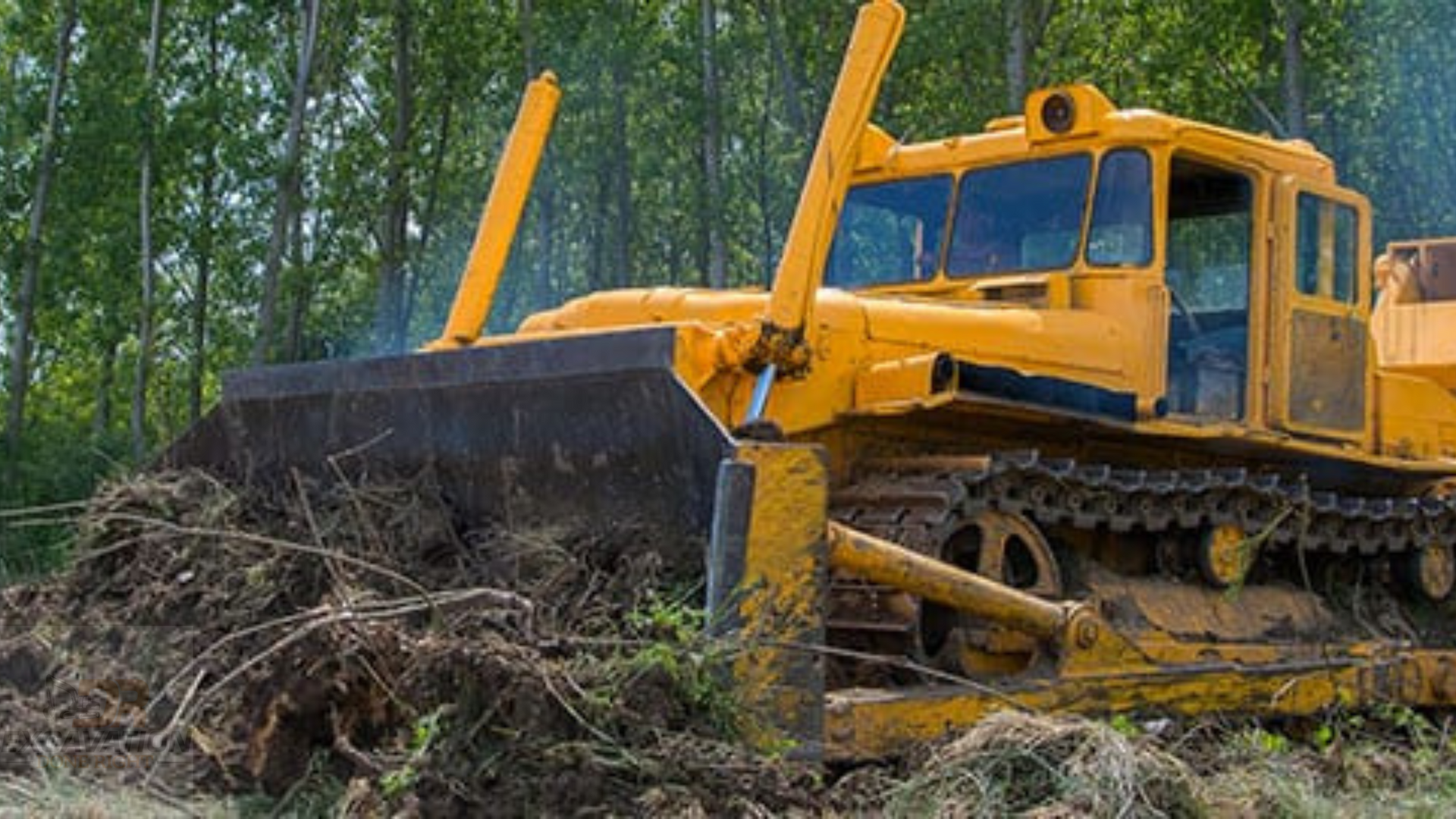Welcome to Excavation Done Right's hydroseeding blog! If you've landed here, chances are you're facing some challenges with hydroseeding or looking to prevent them in your next project. As experts in excavation and landscaping, we understand the importance of achieving lush, green lawns through effective hydroseeding techniques. In this blog post, we'll delve into common problems encountered during hydroseeding projects and provide practical solutions to ensure successful outcomes. From uneven coverage to poor germination rates, we'll address these issues head-on, empowering you with the knowledge and strategies to overcome any obstacles in your hydroseeding endeavors.
Uneven application can lead to patchy growth and an inconsistent appearance. One common culprit behind uneven coverage is improper equipment calibration, which can result in varying seed and mulch distribution rates. Additionally, factors such as wind direction and terrain can contribute to uneven application. To address this issue, ensure that your hydroseeding equipment is properly calibrated according to manufacturer specifications. Consider adjusting application techniques based on environmental conditions to achieve more uniform coverage and promote even germination.
Another challenge frequently encountered in hydroseeding projects is poor germination rates. Several factors can contribute to this issue, including inadequate seed-to-soil contact, improper watering, and suboptimal soil conditions. Insufficient seed-to-soil contact prevents seeds from establishing root systems effectively, resulting in poor germination. To enhance seed-to-soil contact, consider incorporating additional mechanical seedbed preparation techniques such as core aeration or verticutting. Moreover, maintaining consistent moisture levels is essential for supporting germination and seedling establishment. Be sure to follow proper watering schedules and adjust irrigation practices as needed based on weather conditions and soil moisture levels.
By addressing these common problems and implementing the suggested solutions, you can overcome challenges encountered during hydroseeding projects and achieve the lush, green lawns you desire. Stay tuned for more tips and insights from Excavation Done Right, your trusted source for excavation and landscaping expertise.
Key Takeaways
- With our commitment to excellence and innovation, we aim to provide our clients with the most effective solutions for their projects.
- By combining seeds, mulch, fertilizer, and water into a homogeneous slurry, hydroseeding offers superior coverage and faster germination compared to traditional seeding methods.
- This translates to reduced labor costs and accelerated project timelines, enabling you to achieve lush vegetation in a fraction of the time.
Hydroseeding: An Overview

Hydroseeding is a revolutionary method in landscaping and erosion control that is rapidly gaining popularity among homeowners and contractors alike. At ExcavationDoneRight.com, we understand the importance of utilizing advanced techniques like hydroseeding to achieve lush, healthy lawns and combat soil erosion effectively.
Hydroseeding involves the mixture of seeds, fertilizer, mulch, and water to create a slurry that is sprayed onto prepared soil surfaces. This process offers several advantages over traditional seeding methods, making it an attractive option for various landscaping projects.
One of the primary benefits of hydroseeding is its ability to establish grass quickly and evenly over large areas. The slurry provides an ideal environment for seed germination, ensuring uniform coverage and reducing the likelihood of patchy or sparse growth. Additionally, the mulch component helps retain moisture, promoting healthy root development and reducing the need for frequent watering.
Moreover, hydroseeding offers significant time and cost savings compared to traditional seeding techniques. With hydroseeding, large areas can be seeded in a fraction of the time it would take to hand-seed or lay sod, making it a practical choice for commercial projects or expansive residential properties. Furthermore, the overall cost of hydroseeding is often lower since it requires fewer labor hours and materials.
Beyond its efficiency and cost-effectiveness, hydroseeding also offers environmental benefits. By using a slurry mixture instead of sod or turf rolls, hydroseeding minimizes soil disturbance and erosion, preserving the integrity of the landscape. Additionally, the ability to customize the slurry mixture allows for the incorporation of native grasses and vegetation, promoting biodiversity and ecological sustainability.
Hydroseeding is a versatile and environmentally friendly landscaping solution that is well-suited for a wide range of applications. Whether you're looking to establish a new lawn, restore damaged areas, or mitigate erosion on your property, hydroseeding offers unmatched efficiency, cost savings, and environmental benefits. At ExcavationDoneRight.com, we specialize in providing expert hydroseeding services tailored to your specific needs. Contact us today to learn more about how hydroseeding can transform your landscape!
Common Problems Encountered in Hydroseeding
Poor Germination Rates
Hydroseeding, a popular method for establishing vegetation on slopes, lawns, and disturbed soil, offers numerous benefits such as erosion control, soil stabilization, and rapid growth. However, despite its effectiveness, many contractors and property owners encounter challenges with poor germination rates, leading to unsightly patches and compromised erosion control efforts.
Several factors contribute to poor germination rates in hydroseeding projects. Firstly, inadequate soil preparation can hinder seed-to-soil contact, essential for germination. Compacted soil, debris, and uneven grading can create barriers that prevent seeds from establishing roots effectively. Additionally, improper seed selection or application techniques may lead to uneven distribution or insufficient coverage, further reducing germination success.
Environmental conditions also play a significant role in seed establishment. Factors such as temperature fluctuations, excessive moisture, or drought can negatively impact germination rates. Inconsistent watering practices, either too much or too little, can disrupt the delicate balance necessary for seedling growth. Moreover, exposure to sunlight and wind can accelerate moisture evaporation, jeopardizing seed viability.
Erosion Control Failures
Erosion can wreak havoc on construction sites, leading to project delays, environmental damage, and costly repairs. One common method used to combat erosion is hydroseeding, a technique that involves spraying a mixture of seed, mulch, fertilizer, and water onto bare soil surfaces. Despite its effectiveness, erosion control failures can still occur if hydroseeding is not properly implemented.
One of the primary reasons for erosion control failures is improper site preparation. Before hydroseeding can be effectively applied, the soil must be properly graded and compacted to create a stable base. Failure to adequately prepare the site can result in uneven seed distribution and poor germination, leading to erosion problems down the line.
Another common cause of erosion control failures is inadequate maintenance following hydroseeding. While hydroseeding provides an effective initial layer of protection against erosion, ongoing maintenance is necessary to ensure long-term stability. This may include regular watering, monitoring for signs of erosion, and reapplication of seed and mulch as needed.
Weed Infestation
Weed infestation is a common nuisance for property owners, often leading to diminished aesthetic appeal and compromised soil health. Fortunately, hydroseeding offers an effective solution to combat unwanted weed growth while promoting lush, green landscapes. At ExcavationDoneRight.com, we understand the challenges posed by weed infestation and the importance of maintaining pristine outdoor spaces. That's why we're proud to offer hydroseeding services that deliver unparalleled results.
Hydroseeding, also known as hydraulic mulch seeding or hydro mulching, involves spraying a slurry mixture of seed, mulch, fertilizer, and water onto prepared soil. This process creates an ideal environment for seed germination and root establishment, resulting in dense vegetation that naturally suppresses weed growth. Unlike traditional seeding methods, hydroseeding offers several distinct advantages.
Uneven Coverage
Achieving lush, green landscapes through hydroseeding is a cost-effective and efficient solution for many property owners. However, one common issue that can arise is uneven coverage, which can detract from the overall aesthetic and health of the lawn or terrain. Understanding the factors contributing to uneven coverage and implementing strategies to address them is crucial for optimal results.
Hydroseeding involves spraying a slurry mixture of seeds, mulch, fertilizer, and water onto prepared soil surfaces. While this method can promote rapid germination and establish healthy vegetation, several factors can lead to uneven distribution of the slurry, resulting in patchy growth. One primary factor is improper application technique. Inexperienced operators or inadequate equipment may fail to evenly distribute the slurry, leading to areas with sparse vegetation and others that are overly dense.
Another factor contributing to uneven coverage is inadequate soil preparation. Uneven terrain or compacted soil can hinder the proper distribution of the hydroseeding slurry, leading to inconsistent growth patterns. Addressing soil compaction through proper grading and aerating can help promote more uniform seed germination and establishment.
Soil Compaction
Soil compaction is a fundamental aspect to consider in any hydroseeding project. It directly impacts the success of seed germination, root establishment, and overall turf quality. As an SEO expert specializing in excavation and landscaping topics, it's imperative to understand the intricacies of soil compaction and its implications on hydroseeding outcomes.
Hydroseeding, a popular method for establishing vegetation, involves spraying a slurry mixture of seeds, mulch, fertilizers, and water onto prepared soil surfaces. However, even with the finest seed and nutrient blend, poor soil structure due to compaction can severely hinder the growth and development of newly seeded areas.
Compacted soil restricts root penetration, water infiltration, and air movement—all crucial factors for plant growth. This impediment can lead to shallow root systems, increased runoff, and susceptibility to erosion. Moreover, compacted soil limits the effectiveness of hydroseeding applications by inhibiting seed-to-soil contact, essential for germination.
Solutions to Hydroseeding Problems

Conduct Site Analysis and Preparation
Before embarking on a hydroseeding project, it's crucial to conduct a thorough site analysis and preparation to ensure optimal results. Hydroseeding, a popular method for establishing lush greenery, requires careful planning and execution to achieve its full potential. At Excavation Done Right, we understand the importance of proper site assessment and preparation to guarantee the success of your hydroseeding endeavor.
The first step in the process is assessing the site's soil composition, drainage patterns, and existing vegetation. Soil type and condition play a significant role in determining the success of hydroseeding. We utilize advanced techniques and equipment to analyze soil texture, pH levels, and nutrient content. This information helps us formulate the ideal seed and mulch mixture tailored to your specific site requirements.
Next, we evaluate the site's topography and drainage characteristics to identify potential challenges and opportunities. Proper drainage is essential for the success of hydroseeding, as excessive water accumulation can lead to erosion and seed washout. Our team assesses the slope of the land and implements appropriate measures such as contouring and erosion control to ensure optimal water management.
Select Appropriate Seed Mixtures
Hydroseeding has emerged as a popular method for establishing vegetation on various landscapes, from residential lawns to large-scale erosion control projects. One crucial aspect of successful hydroseeding is selecting the appropriate seed mixtures tailored to the specific needs of the site. The success of a hydroseeding project heavily relies on the quality and compatibility of the seed mixture used.
Soil type plays a crucial role in determining the success of hydroseeding projects. Different soil types have varying levels of fertility, drainage, and texture, which can directly impact seed germination and plant growth. At Excavation Done Right, we conduct thorough soil analysis to assess its composition and pH levels, enabling us to recommend seed mixtures that are best suited for the site's soil conditions.
Moreover, climate conditions significantly influence the growth and development of vegetation. Factors such as temperature, precipitation, and sunlight exposure must be taken into account when selecting seed mixtures for hydroseeding. Our team considers the local climate patterns and recommends seed varieties that are well-adapted to thrive in the specific environmental conditions of the project site.
Implement Proper Application Techniques
Proper watering and maintenance are also critical factors in hydroseeding success. After application, it's essential to keep the seeded area consistently moist to support germination and root development. At ExcavationDoneRight.com, we provide our clients with detailed watering instructions and maintenance guidelines to ensure long-term success.
Implementing proper application techniques is essential for successful hydroseeding projects. From thorough site preparation to selecting the right seed mixture and utilizing advanced equipment, every step plays a crucial role in achieving vibrant, healthy turf. At ExcavationDoneRight.com, we are committed to delivering exceptional results and transforming landscapes through expert hydroseeding practices. Contact us today to learn more about how we can enhance your outdoor spaces with our hydroseeding services.
Monitor and Maintain
Monitoring the newly hydroseeded area is crucial during the initial stages of establishment. Regular inspection allows you to identify any issues such as uneven coverage, signs of erosion, or weed growth early on. By promptly addressing these concerns, you can take corrective measures to promote healthy turf development. Additionally, monitoring the moisture levels of the soil is vital to support seed germination and root growth. Adequate watering is key, especially during dry spells or hot weather, to prevent the soil from drying out and hindering seedling growth.
Maintaining proper care after hydroseeding is equally important for long-term success. This includes adhering to a consistent watering schedule to keep the soil moist but not saturated. Overwatering can lead to seed displacement or mold growth, while underwatering may result in poor germination and patchy grass coverage. Furthermore, regular mowing is necessary once the grass reaches a height of 3-4 inches to encourage thick, healthy turf growth. Be sure to adjust the mower height to avoid cutting the grass too short, which can stress the plants and make them more susceptible to disease and weed infestation.
Conclusion
Hydroseeding emerges as a powerful solution for establishing lush, healthy lawns and landscapes with unparalleled efficiency and effectiveness. As we've explored throughout this blog post series, the process of hydroseeding offers numerous advantages over traditional seeding methods, making it a preferred choice for both residential and commercial projects alike. From its ability to cover large areas quickly to its superior erosion control capabilities,
hydroseeding proves to be a versatile and cost-effective option for achieving green spaces that thrive.
Frequently asked questions (FAQs)
What is hydroseeding?
Hydroseeding is a landscaping technique that involves spraying a mixture of water, seed, fertilizer, and mulch onto a prepared soil surface. This mixture, also known as a slurry, forms a protective layer over the soil, promoting seed germination and healthy plant growth.
How does hydroseeding work?
Hydroseeding works by combining all the necessary elements for successful seed germination and plant growth into a single application. The slurry is evenly sprayed onto the soil using specialized equipment, ensuring uniform coverage and optimal conditions for seedling establishment.
What are the benefits of hydroseeding?
Hydroseeding offers several advantages over traditional seeding methods. It provides faster germination and establishment of grass or vegetation, resulting in a lush, green lawn or landscape in a shorter amount of time. Additionally, hydroseeding can be customized to suit specific soil and climate conditions, making it suitable for a wide range of projects.
Is hydroseeding suitable for my project?
Hydroseeding is ideal for a variety of applications, including residential lawns, commercial landscapes, highway slopes, and erosion control projects. Whether you're looking to establish a new lawn, repair damaged areas, or prevent soil erosion, hydroseeding can be tailored to meet your specific needs.
How long does it take to see results with hydroseeding?
While the exact timeline may vary depending on factors such as seed type, soil conditions, and climate, most clients can expect to see visible results within 2 to 3 weeks of hydroseeding. With proper care and maintenance, you can enjoy a beautiful, healthy landscape in no time!


